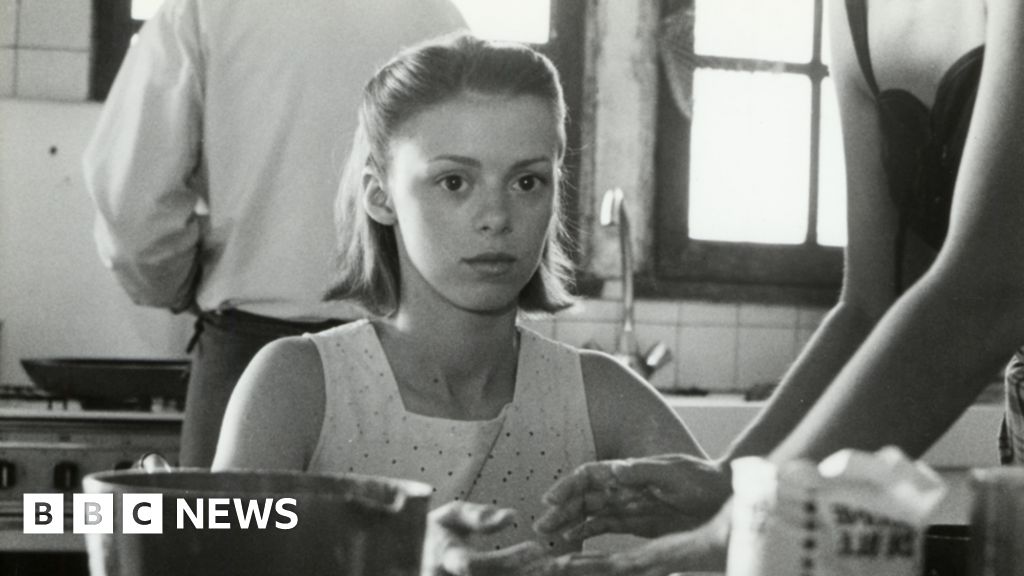Justice
2014 - Sculpture (Sculpture)
Zai Kuning
Justice (2014) presents viewers with a curious assemblage: a wooden gallows with slightly curved spindles protruding from the topmost plank, which in turn is covered with rudimentary netting, the threads slackly dangling like a loose spider’s web or an rib cage that’s been cracked open. A bundle of small red rattan balls hang from the front end of the plank, precariously knotted to a single thread hanging from the gallows’ edge. A book hangs from similar red threads at the plank’s rear, its surfaced wrapped multiple times over with the thread to hold it in place, the red thread resembling blood vessels or connective tissue. A strange substance covers the book’s surface: translucent manila-hued beeswax that gives it a cream-colored luster. This assemblage bears anthropological significance, as Zai notes, Justice reimagines the life worlds of the Orang Laut, an indigenous nomadic tribe from Indonesia’s Riau Archipelago that migrates through maritime travel but that has become increasingly displaced and marginalized in recent years. Each component of his installation, by extension, draws inspiration from different objects that Zai found amongst the Orang Laut during his fifteen years of researching the tribe. Zai tellingly does not allow his work to slip entirely towards ethnography, and he does not describe the use value for these objects, presenting Justice instead as a creative rendering of the Orang Laut’s “world” through a composite of their accumulated ephemera. Justice functions as both an imaginary artifact as well as an artistic statement of resistance against forms of cultural imperialism that threatens to erase non-mainstream cultures.
Zai Kuning is one of Singapore’s leading avant-garde practitioners. He refuses to categorize his work, and his output crosses multiple disciplines including painting, drawing, sculpture, installation, film and video, experimental sound, and performance. His practice often examines the concept of the “tortured body,” and many of his pieces explore the relationship between somatic experiences and language. He founded the Metabolic Theater Laboratory (MTL) in 1996 to examine the relationship between physical movements and language in Southeast Asian rituals. After disbanding the MTL in 2001, he returned to individually defined practices such as solo performance, writing, sound, and research. His most recent work responds to histories of indigenous people in Singapore and Indonesia including the Orang Laut and Dapunta Hyang Jayenasa.
Colors:
Related works sharing similar palette

© » KADIST
Walead Beshty
2011Constructed out of metal or glass to mirror the size of FedEx shipping boxes, and to fit securely inside, Walead Beshty’s FedEx works are then shipped, accruing cracks, chips, scrapes, and bruises along the way to their destination...

© » ANOTHER
The West Hollywood Artist Who Immortalised LA’s Golden Boys | AnOther A new exhibition in New York showcases the work of Kenneth Kendall, an artist who sculpted James Dean, Marlon Brando and more in the bohemian atmosphere of late 20th-century Los Angeles February 06, 2024 Text Miss Rosen Back in the 1950s, Hollywood’s fabled Melrose Avenue was still a sleepy street home to cabinetmakers and print shops catering to the local community...

© » ARTSJOURNAL
Emmanuelle Debever: Prosecutors probe death of Gerard Depardieu accuser - BBC News Image source, Les Films du Losange Image caption, A young Emmanuelle Debever, who appeared in several films and television programmes in the 1980s By Hugh Schofield BBC News, Paris Paris prosecutors are investigating the apparent suicide of an actress who alleged she was sexually assaulted decades ago by Gérard Depardieu...

© » KADIST
Ahmet Ögüt
2022Monuments of the Disclosed by Ahmet Ögüt is an NFT series of digital monuments to whistleblowers...

© » KADIST
Ahmet Ögüt
2022Monuments of the Disclosed by Ahmet Ögüt is an NFT series of digital monuments to whistleblowers...

© » KADIST
Igor Grubic
2013The installation “East Side Story” is based on events that took place in the streets of Belgrade in 2001 and Zagreb in 2002, during the Gay Pride demonstrations, where the participants were the victims of verbal and physical injury by neo-Nazi groups and other citizens...

© » KADIST
Haig Aivazian
For the exhibition 1440 sunsets per 24 hours at KADIST Paris in 2017, Haig Aivazian presented a sprawling installation, which sought to enact various instances of the deployment of light and darkness within public space and sports, reflecting on the double-edged abilities of lighting systems to expose, highlight or dissimulate subjects...

© » KADIST
Sergio De La Torre
2008Nuevo Dragon City is a reenactment of a historical event from 1927 in which six Chinese were either trapped or voluntarily hid themselves inside a building in northern Mexico...

© » KADIST
Ahmet Ögüt
2022Monuments of the Disclosed by Ahmet Ögüt is an NFT series of digital monuments to whistleblowers...

© » KADIST
Gregory Crewdson
2005Forest Gathering N.2 is part of the series of photographs Beneath the Roses (2003-2005) where anonymous townscapes, forest clearings and broad, desolate streets are revealed as sites of mystery and wonder; similarly, ostensibly banal interiors become the staging grounds for strange human scenarios...

© » SLASH PARIS
Martha Wilson — Invisible, Works on Aging (1972-2022) — Frac Sud, Cité de l’art contemporain — Exhibition — Slash Paris Login Newsletter Twitter Facebook Martha Wilson — Invisible, Works on Aging (1972-2022) — Frac Sud, Cité de l’art contemporain — Exhibition — Slash Paris English Français Home Events Artists Venues Magazine Videos Back Martha Wilson — Invisible, Works on Aging (1972-2022) Exhibition Photography Martha Wilson, Beastly + Beauty, 1974 et 2009 Photographies noir et blanc, texte, 43,2 × 59,7 cm, édition de 3 © DR Martha Wilson Invisible, Works on Aging (1972-2022) Ends in 7 months: July 1, 2023 → February 4, 2024 The Frac Sud is pleased to present a major solo exhibition in France by Martha Wilson, a pioneering figure and guiding light of feminist engagement through art...

© » KADIST
Ahmet Ögüt
2022Monuments of the Disclosed by Ahmet Ögüt is an NFT series of digital monuments to whistleblowers...

© » KADIST
Zarouhie Abdalian
2010The first iteration of Flutter was specifically conceived for the Pro Arts Gallery space in Oakland in 2010, viewable from the public space of a sidewalk, and the version acquired by the Kadist Collection is an adaptation of it...







